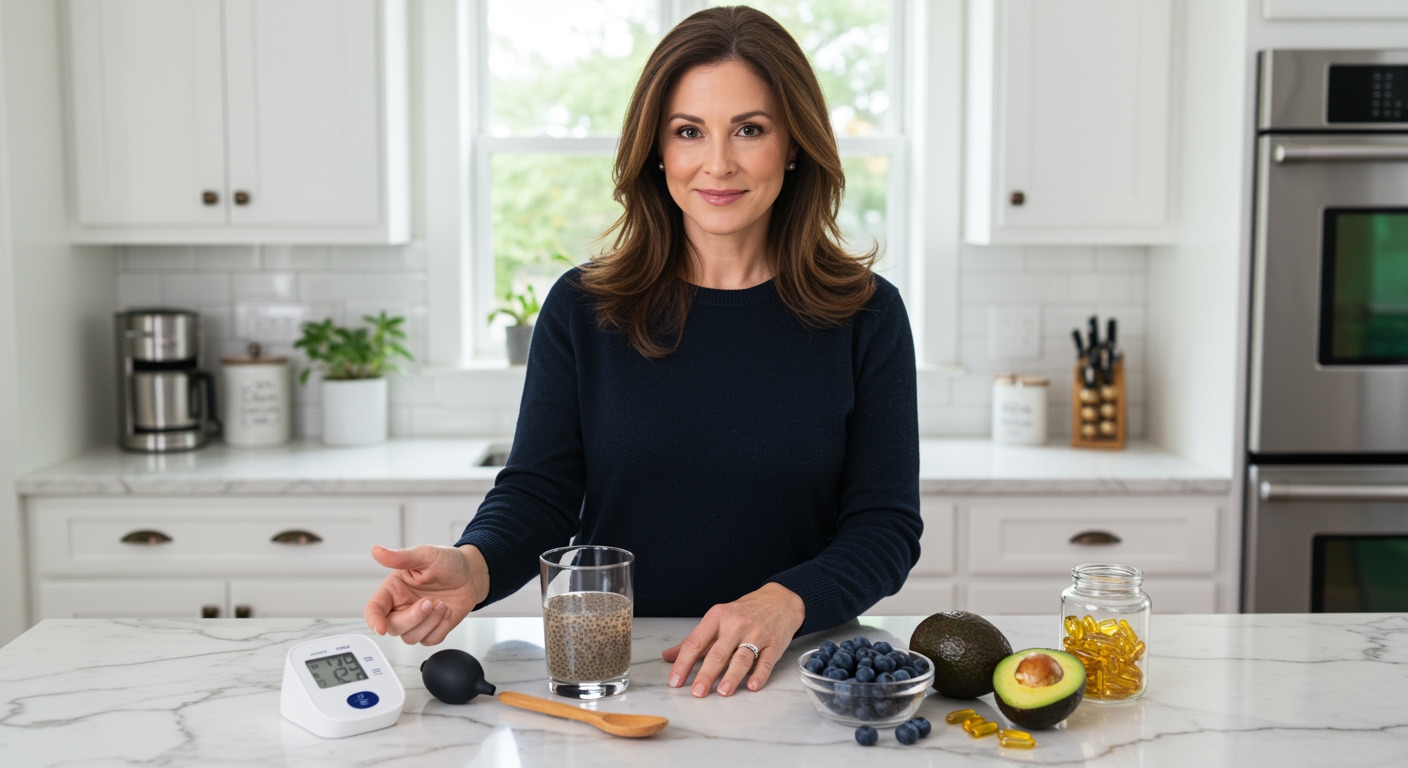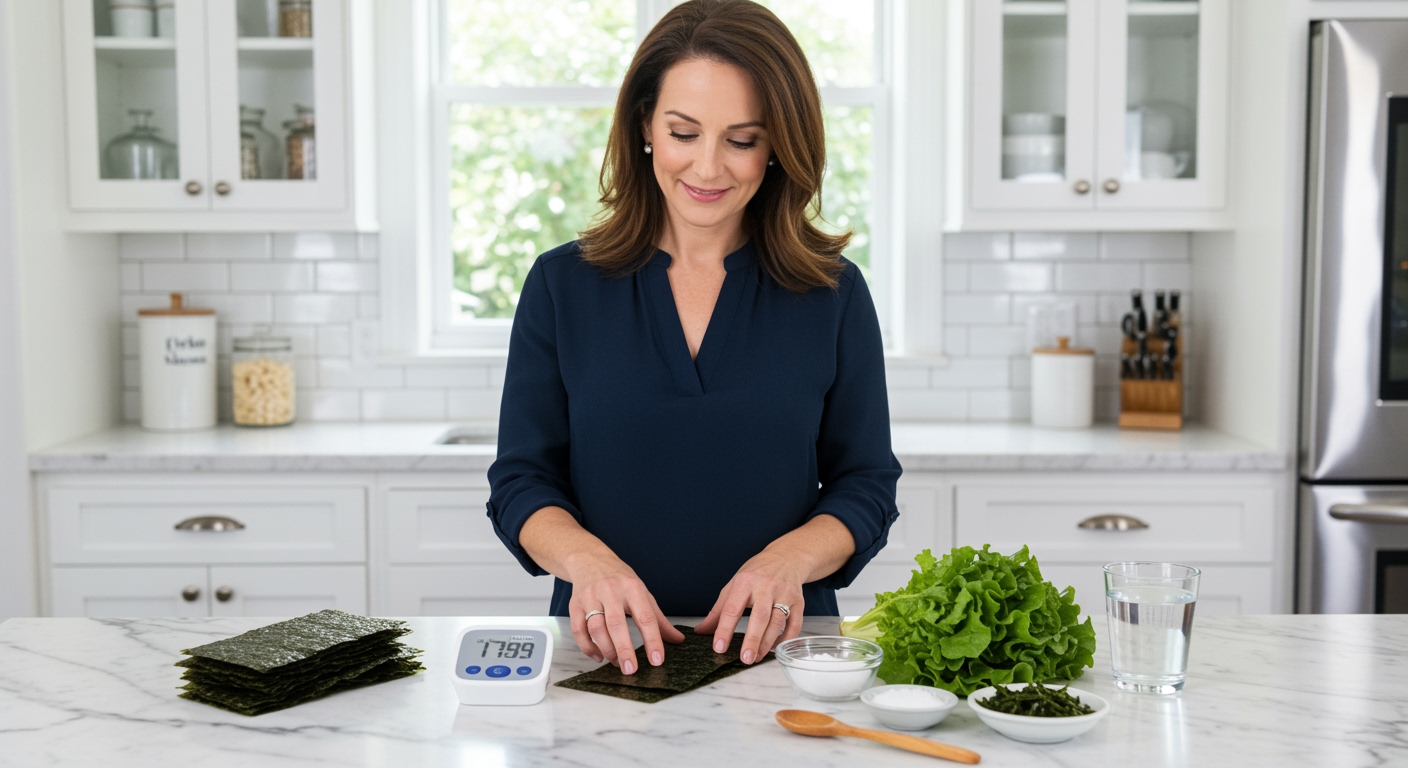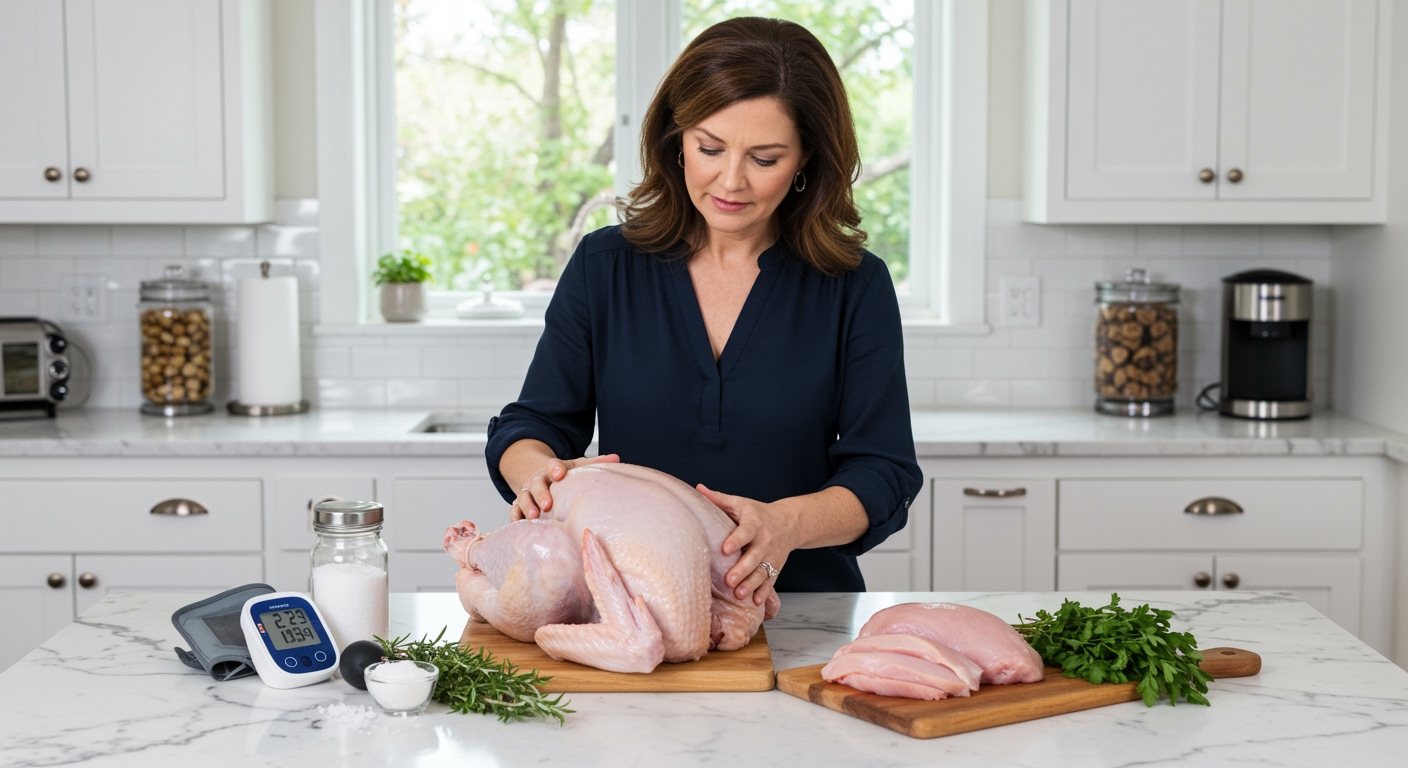✪ Key Takeaway: Chia seeds can help lower blood pressure through omega-3 fatty acids, fiber, and potassium when consumed daily as part of a balanced diet.
Introduction
Your doctor just told you that your blood pressure numbers are creeping up, and now you are wondering if those tiny chia seeds everyone talks about can actually help.
You have probably heard conflicting information about whether these small seeds can make a real difference in managing blood pressure, and you want to know the truth before adding another supplement to your routine.
Hi, I am Abdur, your nutrition coach, and today I am going to explain exactly how chia seeds work in your body to support healthy blood pressure and whether they deserve a place in your daily diet.
What Makes Chia Seeds Effective for Blood Pressure?
Chia seeds contain three key nutrients that directly impact your cardiovascular system and blood pressure regulation.
The omega-3 fatty acids in chia seeds, particularly alpha-linolenic acid, help reduce inflammation in your blood vessels and improve their flexibility.
When your blood vessels are more flexible, your heart does not have to work as hard to pump blood through your system, which naturally lowers blood pressure.
The soluble fiber in chia seeds also plays a crucial role by helping your body eliminate excess sodium and cholesterol.
This fiber forms a gel-like substance in your digestive system that binds to sodium and carries it out of your body, reducing the fluid retention that contributes to high blood pressure.
Additionally, chia seeds provide potassium, a mineral that counteracts the effects of sodium by helping your kidneys excrete excess salt while relaxing blood vessel walls.
✪ Fact: Just two tablespoons of chia seeds provide about 1.8 grams of omega-3 fatty acids, more than most fish servings.
How Much Should You Eat Daily?
Research shows that consuming 25 to 40 grams of chia seeds daily provides the most cardiovascular benefits without causing digestive issues.
This amount equals roughly 2 to 3 tablespoons, which you can easily incorporate into your meals throughout the day.
Studies specifically examining blood pressure found that participants who consumed 35 grams daily experienced significant reductions in both systolic and diastolic blood pressure after 12 weeks.
The key is consistency rather than large amounts, as your body needs time to build up the beneficial compounds and adapt to the increased fiber intake.
Start with one tablespoon daily for the first week to allow your digestive system to adjust to the increased fiber content.
Then gradually increase to 2-3 tablespoons spread throughout your day, always ensuring you drink plenty of water to help the fiber work effectively.
✪ Pro Tip: Soak chia seeds in water for 15 minutes before eating to prevent digestive discomfort and improve nutrient absorption.
When Will You See Results?
Most people begin experiencing blood pressure improvements within 4 to 6 weeks of consistent daily chia seed consumption.
However, the timeline varies based on your current blood pressure levels, overall diet quality, and lifestyle factors like exercise and stress management.
Clinical studies show that the most significant cardiovascular benefits appear after 12 weeks of regular consumption, with some participants experiencing drops of 6-10 mmHg in systolic pressure.
The omega-3 fatty acids need time to incorporate into your cell membranes and begin reducing inflammation throughout your cardiovascular system.
Meanwhile, the fiber works more quickly to help eliminate excess sodium, so you might notice reduced bloating and fluid retention within the first two weeks.
Remember that chia seeds work best as part of a comprehensive approach that includes reducing processed foods, increasing vegetables, and maintaining regular physical activity.
✪ Note: Track your blood pressure weekly to monitor progress, but avoid daily measurements that can cause unnecessary stress.
Are There Any Side Effects or Precautions?
Chia seeds are generally safe for most people, but their high fiber content can cause digestive discomfort if you increase your intake too quickly.
Common initial side effects include bloating, gas, and changes in bowel movements, which typically resolve within a week as your digestive system adapts.
The most important precaution involves blood-thinning medications, as chia seeds omega-3 content may enhance their effects and increase bleeding risk.
If you take warfarin, aspirin, or other blood thinners, consult your healthcare provider before adding chia seeds to your daily routine.
People with swallowing difficulties should always consume chia seeds pre-soaked or ground, as dry seeds can expand and potentially cause choking.
Additionally, if you have diabetes, monitor your blood sugar levels closely when starting chia seeds, as their fiber content can affect how quickly your body absorbs glucose from meals.
Always drink at least 8 ounces of water with each serving of chia seeds to prevent the fiber from causing constipation or intestinal blockage.
✪ Pro Tip: Buy organic chia seeds when possible to avoid pesticide residues that could counteract their health benefits.
Best Ways to Include Chia Seeds in Your Diet
The easiest way to consume chia seeds daily is by making chia pudding the night before, mixing 3 tablespoons with 1 cup of milk and letting it set overnight.
You can also sprinkle ground chia seeds over your morning oatmeal, yogurt, or cereal to boost the nutritional content without changing the taste significantly.
Adding chia seeds to smoothies provides an excellent way to mask their texture while combining them with other heart-healthy ingredients like berries and leafy greens.
For a quick afternoon snack, mix chia seeds into water with a squeeze of lemon juice and let it sit for 15 minutes to create a natural energy drink.
Ground chia seeds work well as an egg substitute in baking recipes, using 1 tablespoon of ground seeds mixed with 3 tablespoons of water to replace one egg.
You can also incorporate whole chia seeds into homemade bread, muffins, or energy bars for a nutritional boost that supports your blood pressure goals.
✪ Fact: Chia seeds can absorb up to 12 times their weight in water, making them excellent for staying hydrated.
The Bottom Line
Chia seeds can definitely help manage blood pressure when consumed consistently as part of a heart-healthy diet and lifestyle.
Small seeds create big changes when you give them time to work their magic in your body.
I would love to hear about your experience with chia seeds or any questions you might have about incorporating them into your blood pressure management plan, so please share your thoughts in the comments below.
References
At NutritionCrown, we use quality and credible sources to ensure our content is accurate and trustworthy. Below are the sources referenced in creating this article:
- Healthline: Chia Seeds Lower Blood Pressure
- PMC: Chia Seeds and Cardiovascular Health
- PubMed: Long-term Chia Seed Supplementation Effects
- Pharmacy Times: Chia Seed Supplementation and Blood Pressure





